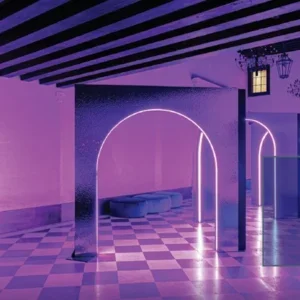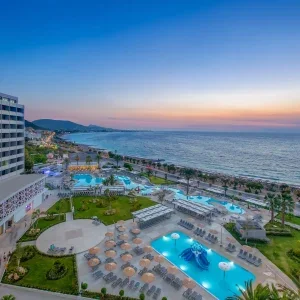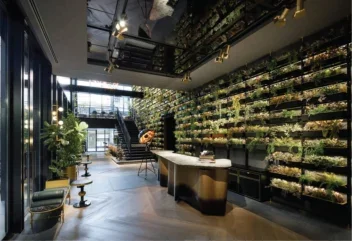
“To put it rather bluntly,” the satirist Fran Lebowitz once claimed, “I am not the type who wants to go back to the land – I am the type who wants to go back to the hotel.” For centuries, hotels have been happy to oblige her. These, after all, have traditionally been places of escape, sanctuaries from the grime and mud of the wider world. This is clear in myriad ways, from the bellhops and the room service to the ubiquitous ‘do not disturb’ signs guests find hanging from their doors.
Yet with the planet looking increasingly fragile – and years of lockdowns sharpening our collective appreciation for nature – these old ideas are breaking down. Far from being refuges from the great outdoors, properties are increasingly ushering nature in, integrating plants and light and even the whispering wind to corridors and bars.
Broadly known as biophilia, this trend partly reflects the human tendency to huddle close to nature, whether that’s taking pleasure in a tulip or marvelling at a languid summer dawn. Certainly, guests themselves are making their preferences increasingly clear, with a 2022 poll finding that 78% of respondents hoping to stay in at least one eco-friendly location over the coming year. Listen to insiders, meanwhile, and it’s clear that biophilia is about more than just decoration. “Biophilic design enhances the guest experience,” says Larry Traxler, Hilton’s senior VP of global design, arguing it can bolster productivity, dampen stress – and even lower blood pressure.
36%
The percentage of hotel guests that enjoy spending time in biophilic lobbies.
Terrapin
Factor in the environmental and financial benefits of biophilia, meanwhile, and no wonder it’s sweeping properties from Costa Rica to Japan, with the ‘Human Spaces 2.0’ report finding 36% of hotel guests enjoyed spending more time in biophilic lobbies compared with sterile alternatives. Not, of course, that any of this is easy. Requiring a deep understanding of the local environment, biophilic champions must equally ensure their designs abide by global standards, especially now that their ideas thrive at the biggest brands around.
Back to nature
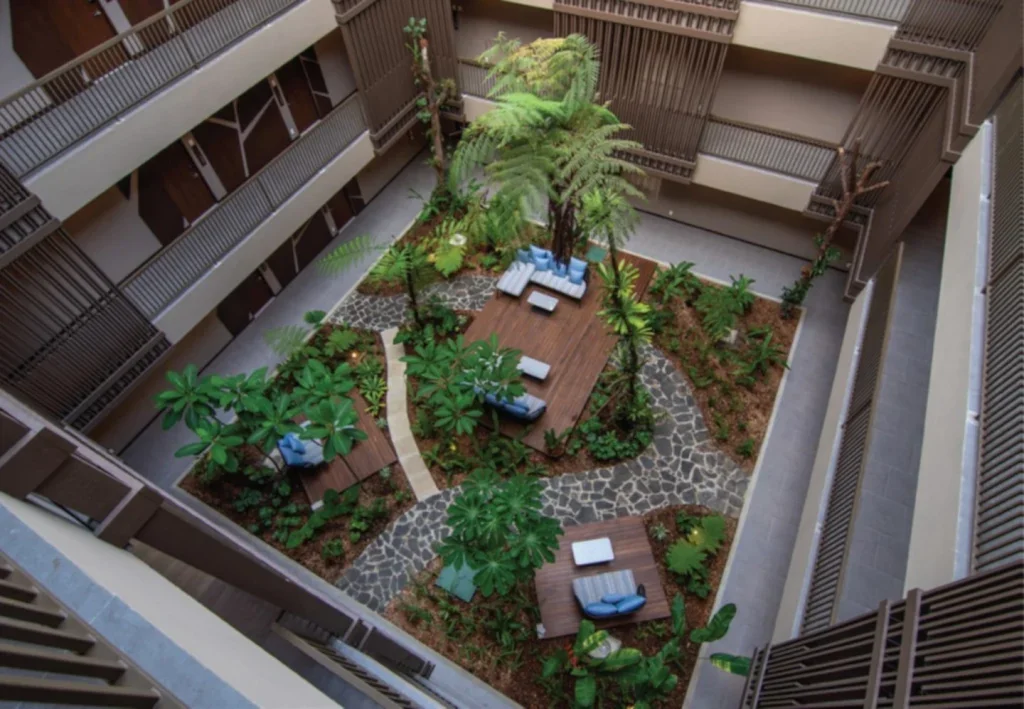
Few insiders are better placed to consider the opportunities – and challenges – of design biophilia than Damien Perrot. A hospitality veteran, he began at French hotel giant Accor back in 1998. Over the subsequent two decades, he’s worked in a variety of roles, from equipment services to design and innovation. In 2023, meanwhile, these varied roles crystallised into Perrot’s most current role, where he currently serves as Accor’s global chief design, technical services and innovation officer for premium, midscale and economy brands. To put it differently, Perrot is someone able to reflect on biophilia in the round – and as he explains, these principles are central to Accor as a global brand. “Biophilia,” he says, “is definitely very important for us. It’s much more than a trend or an aesthetic. For us, it’s a design process, so we really take that into account to answer guest needs, as well as the challenges we’re facing today.”
$3.1bn
The estimated size of the biophilic design market by 2028.
Budwing
This enthusiasm is obvious if you take a tour of Accor brands. In Los Angeles, for instance, the Fairmont Century Plaza has clean lines and thick potted plants. Thousands of miles away, the Grand Mercure Agra bills itself as an oasis in the city, boasting elegant water features and a shaded courtyard setting.
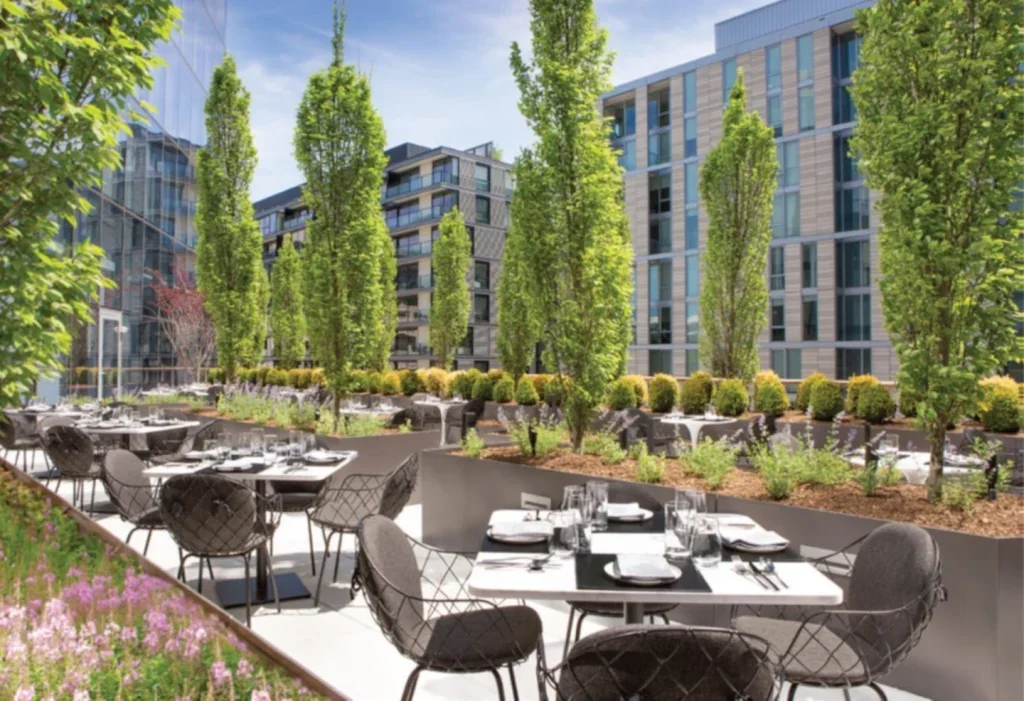
At the same time, Accor’s work is being echoed by hospitality at large. Wyndham, Marriott and IHG are just three of the industry titans to bring greenery into their properties, even as the global biophilic design market could reach $3.1bn by 2028. That, of course, still leaves the question of why biophilia is blooming.
As Perrot’s allusion to “guest needs” implies, part of the answer lies with customers. Once again, the numbers are revealing, with 79% of guests in one 2018 survey declaring they’d rather sleep in environmentally friendly properties. Covid-19, for its part, is a factor too: a 2022 survey of 507 hotelgoers found that the depression and anxiety pushed many to reconnect with nature. Even so, it’d be foolish to suggest that biophilia is simply giving customers what they want. One important factor is doing good by the planet, with Traxler suggesting that nature-first design can “improve air quality” – as well as “create a strong local connection and message about sustainability and our focus on delivering world-class hospitality.” Perrot dovetails the green agenda with staying in the black, noting that with careful placement of walls or windows, hotels can reduce the need for air conditioning and drastically cut energy bills, even as they make their rooms and restaurants more beautiful places to be.
Green space
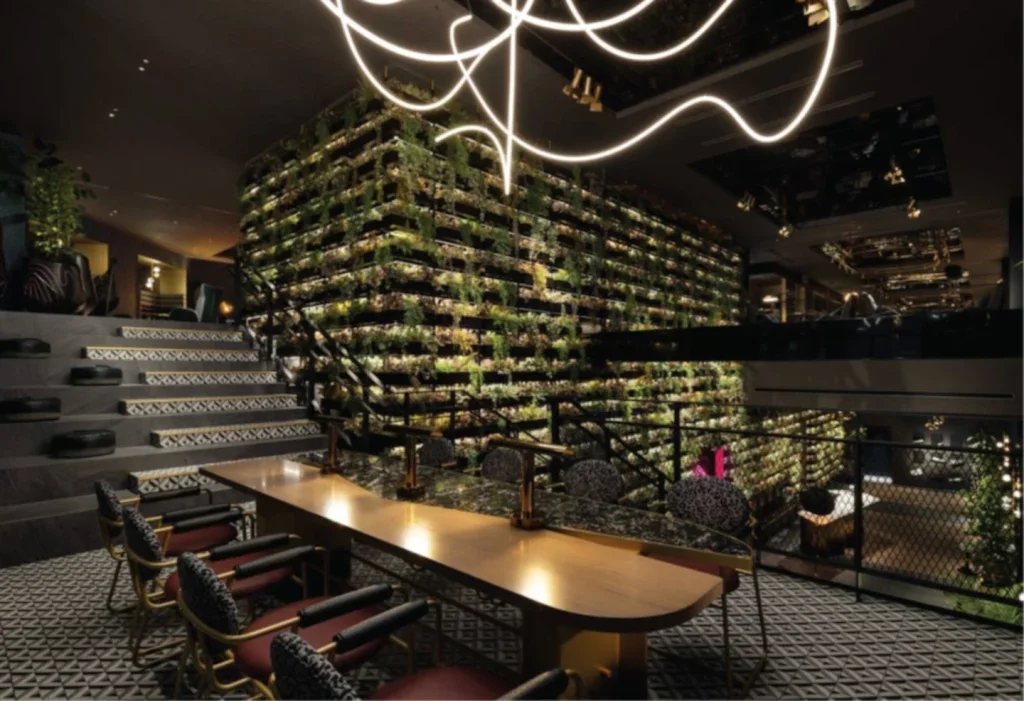
Visit the Mercure Tokyu Stay Osaka Namba, and you get a pretty good idea of what hotel biophilia looks like. Flanked by power lines and overpasses, its setting oozes Japanese urbanism. Even before you go inside, though, you’ll notice a change. Guarding the entrance are flowers and trees, with more poking up from the windows above your head. Inside, it’s more of the same: plants, on simple black shelves, line walls towards the ceiling. More green sprouts up from vast black pots, even as nearby paintings continue the naturalistic theme too. It seems fair to agree with Perrot when he says the aim at the Mercure Tokyu Stay Osaka Namba was to create an “immersive” natural experience. For if greenery is certainly part of the equation here, both executives agree biophilia is about far more than plant life. “This trend is not just about aesthetics but should embrace all five senses – sight, touch, sound, smell and taste,” is how Traxler vividly puts it.
“This delivers a multi-sensory experience for our guests that reduces stress, improves their mood (physical and mental health) and elevates their overall willingness to return to our hotels. It is key not to lose sight of touching all five senses and not just stop at a few potted plants in the lobby.”
Certainly, that’s apparent in Osaka: all those plants don’t exist in a vacuum, but instead are lit by elegant spotlights. That’s of a piece, moreover, with the holistic way designers are enacting biophilic principles at other properties. By way of example, Traxler showcases the Botánika Osa Peninsula, part of Hilton’s Curio Collection. Far from the potted plant cliche, this luxury Costa Rican hotel offers everything from stargazing rooftops to an outdoor reflection pond. Chosen to attract indigenous birds, even the hotel’s orchid and medicinal gardens are designed to bring nature in.
At their best, in fact, biophilic properties seem almost to surrender themselves to nature, tweaking their design to showcase the best our planet offers. To explain what he means, Perrot highlights another Accor hotel, the Novotel Recife Marina. In a sun-kissed corner of northern Brazil, Perrot describes how the property’s vast windows ensure that “light really enters into the heart of the building”. Framed by the Atlantic, the position of rooms and public spaces trick guests into thinking they’re floating on the open sea. “You really have a sense of space in this property,” Perrot says. “There is a strong emotion thanks to biophilia.”
The whole world’s a stage
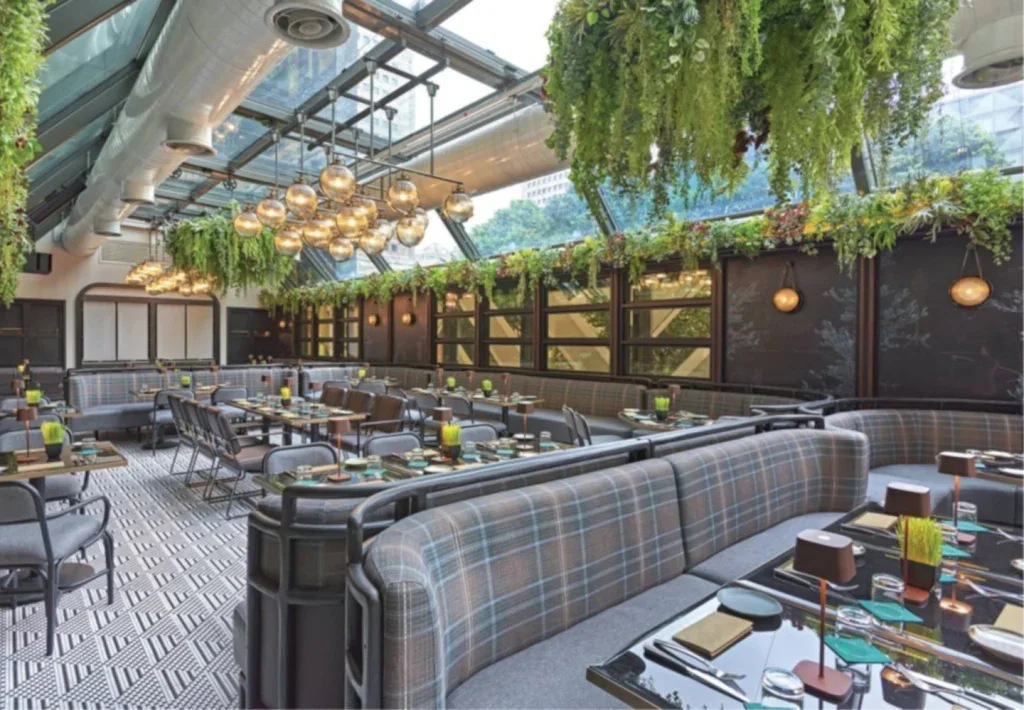
Combined with an emphasis on local building materials, hotel biophilia clearly transcends Traxler’s potted plant fears. As this attention to detail implies, however, getting things right isn’t always easy. Think about it like this: whatever their intellectual pretensions, these are ultimately still places to eat, sleep and relax. By their very nature, moreover, hotels are transient places prone to wear and tear. “One of the main challenges here,” Traxler says, “is ensuring that biophilic elements are not only aesthetically pleasing but also sustainable and practical to maintain, given the high traffic demands our hotels are subject to.”
While that can plausibly be solved by using robust materials like granite or bamboo, there are broader issues too, particularly when it comes to the biggest brands. For while biophilia should ideally adapt to the local environment, multinationals must equally follow global design standards. At Accor, at least, the way Perrot and his team square the circle is by developing a global Biophilic Design Guideline.
Providing insight everywhere from broad biophilic principles – to how guest rooms should look across different Accor verticals – the Frenchman says this ensures “everyone” from design chiefs down understand what to work towards. That’s especially helpful, Perrot adds, when Accor acquires a preexisting property, and can’t simply start landscaping from scratch. Not that biophilia at Accor is a totally centralised concept. On the contrary, Perrot ends the conversation by praising the monthly meetings he hosts with colleagues around the world. “I like,” he says, “to share best practice projects so that people in America know what’s being done in Japan or China – and vice versa – so that they learn about the evolution happening in other countries and regions.” Considering the natural diversity of the planet at large, that’s surely wise.


